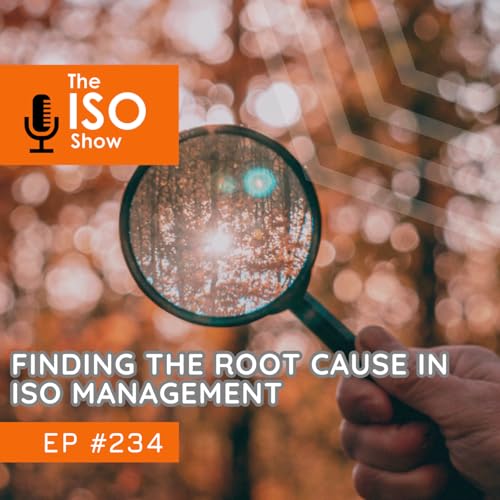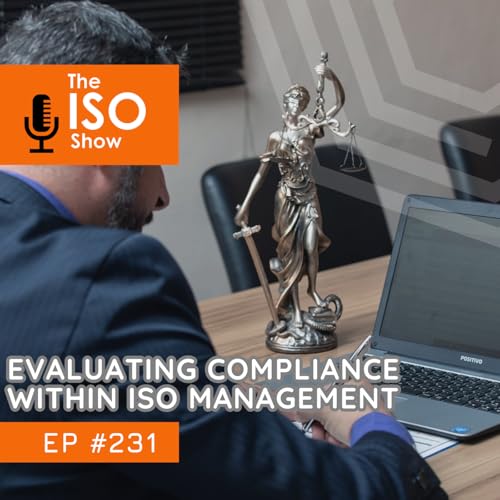How often have you heard someone say they aspire to be an ISO consultant? Likely not at all! That's not surprising as it's quite a niche world to find yourself in, yet despite that, there are still thousands of ISO professionals worldwide. We're continuing with our latest mini-series where we introduce members of our team, to explore how they fell into the world of ISO and discuss the common challenges they face while helping clients achieve ISO certification. In this episode we introduce Anju Punetha, a QHSE Consultant at Blackmores, to share the journey of how she transitioned from special education in India, to ISO consultancy for international organisations. You'll learn · What is Anju's role at Blackmores? · What does Anju enjoy outside of consultancy? · What path did Anju take to become an ISO Consultant? · What is the biggest challenge she's faced when implementing ISO Standards? · What is Anju's biggest achievement? Resources · Isologyhub · From Silos to Synergy: The benefits of Implementing an Integrated ISO Management System Webinar registration In this episode, we talk about: [02:05] Episode Summary – We introduce Anju Punetha, a QHSE Consultant here at Blackmores, to discuss her journey towards becoming an ISO consultant who specialises in ISO 9001, ISO 14001, ISO 45001, ISO 27001, ISO 20121 and ISO 55001. [04:05] What is Anju's role at Blackmores? Her role primarily involves supporting clients in two key areas: maintaining and continually improving their existing ISO management systems and helping them establish and implement new standards. As part of that support, she: · Conduct internal audits · Reviews and updates management system documentation · Facilitate management reviews · Train internal teams and prepare them for certification audits. When implementing a new ISO standard, she'll start with a gap analysis – i.e comparing their current practices against the standard's requirements. Then break down those requirements into simple, easy-to-understand language and create a practical plan to bridge the gaps. Depending on the standard, she may also facilitate strategic business risk assessments, environmental aspects and impacts assessments, or information security risk assessments. Additionally, Anju helps clients develop and implement policies and procedures, create legal and compliance registers, and verify their readiness for certification body audits. [05:55] What does Anju enjoy doing outside of consultancy?: Anju loves spending time outdoors with long walks being her go-to, as they help her unwind both physically and mentally. She also enjoys cooking for her family and friends. Experimenting with different cuisines and blending spices is something Anju finds incredibly relaxing. [08:00] What was Anju's path towards becoming an ISO Consultant?: Like many of the Blackmores team, Anju never planned to become an ISO consultant. She began her career as a Special Educator, working with children with special needs in India. Later, she transitioned into the development sector as a Research Assistant, working on projects funded by The World Bank and the UN World Food Programme. These projects focused on microfinance, training and development, and women & child health. However, that role involved a lot of travel, which became challenging after the birth of her first son. So, Anju decided that would be a good time to take a career break. When Anju was ready to return to work, she looked for an office-based role which resulted in her joining Ericsson, a Swedish Networking and Telecommunication Company as support staff, and progressed upwards to become the Learning and Development Manager at their rapidly growing Global Service Centre in India. This involved managing training requirements of an employee base of around 4000+ employees, involvement in stakeholder management at all levels and vendor management. As part of the Operational Excellence initiatives, she also got involved in preparing different business teams for their internal and external audits. During that time, Anju became interested in Ericsson's Group Management System, which all legal entities had to comply with. She then moved into the newly formed Quality Department and helped them to gain various ISO certifications. She was the Project Leader for implementing Ericsson's Operational Maturity Model compliant to the requirements of ISO 9001, ISO 14001, ISO 27001 and OHSAS 18001 (ISO 45001's predecessor). Joining Blackmores as an ISO Consultant felt like a natural next step when she relocated to UK. She's now been a member of our team for over six years, and continues to inspire others with her level of dedication to her work and clients. [13:35] What is Anju's favourite aspect of being a Consultant? – The variation in daily activities is a big positive...
Más
Menos
 44 m
44 m 26 m
26 m Oct 30 202537 m
Oct 30 202537 m Oct 15 202525 m
Oct 15 202525 m Oct 8 202535 m
Oct 8 202535 m Sep 24 202531 m
Sep 24 202531 m 30 m
30 m 25 m
25 m
